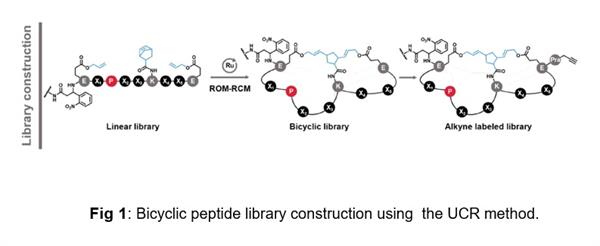MYC-Targeting Inhibitors Generated From A New Method To Synthesize Stereo-Diversified Bicyclic Libraries
Tech ID: 33432 / UC Case 2024-709-0
Background
MYC is a nuclear transcription factor that is constitutively and aberrantly expressed in over 70% of human cancers. The abnormal over-expression of MYC is frequently observed in some tumors, including carcinomas of the breast, colon, and cervix, as well as small-cell lung cancer, osteosarcomas, glioblastomas, and myeloid leukemias. Although its exact mechanism of action is under debate, MYC has long been one of the most sought-after oncology drug targets. Bicyclic peptides targeting MYC may be a new mode of cancer therapy.
Brief Description
Professor Min Xue and colleagues from the University of California, Riverside have developed a new method of construction of a bicyclic peptide library featuring a novel stereo-diversified structure and a simplified construction strategy. MYC inhibitors were synthesized to demonstrate this method. The method works by using a tandem ring-opening metathesis (ROM) and ring-closing metathesis (RCM) reaction (ROM-RCM) to cyclize the linear peptide library in a single step. This technology is advantageous because the resulting bicyclic peptide may be easily linearized for MS/MS sequencing with a one-step chemistry procedure.

Applications
- For possible targeted delivery of MYC drugs to tumors, including carcinomas of the breast, colon, and cervix, as well as small-cell lung cancer, osteosarcomas, glioblastomas, and myeloid leukemias.
- Methods to generate a bicyclic stereo-diversified peptide library to target different diseases.
Patent Status
Patent Pending
Related Materials
Contact
- Grace Yee
- grace.yee@ucr.edu
- tel: View Phone Number.
Other Information
Keywords
Peptide, Bicyclic peptide library, metathesis, cMyc inhibitor
